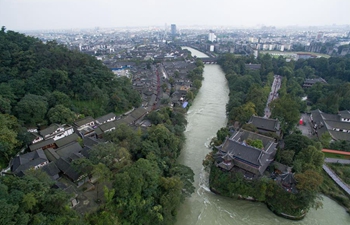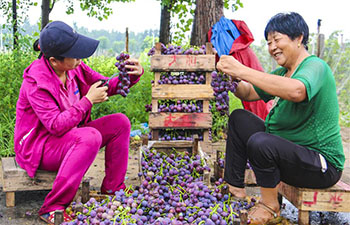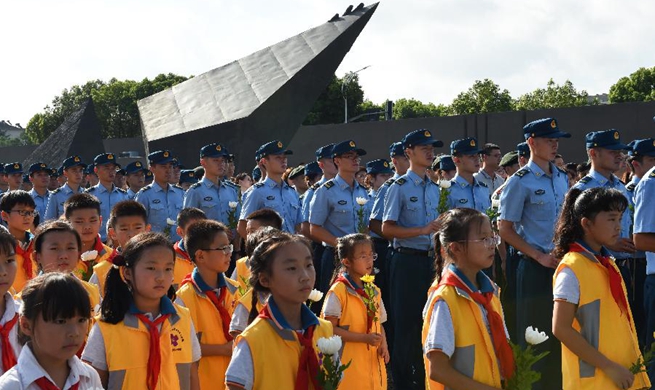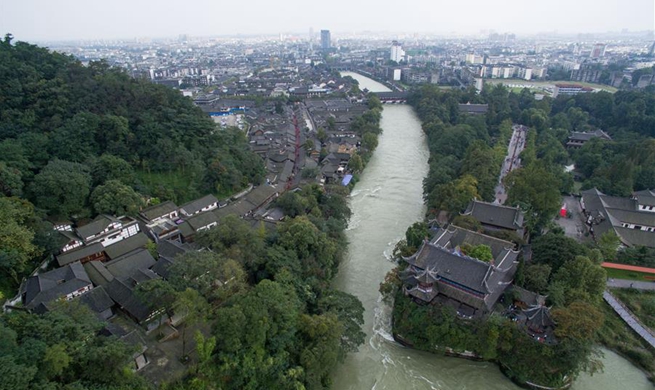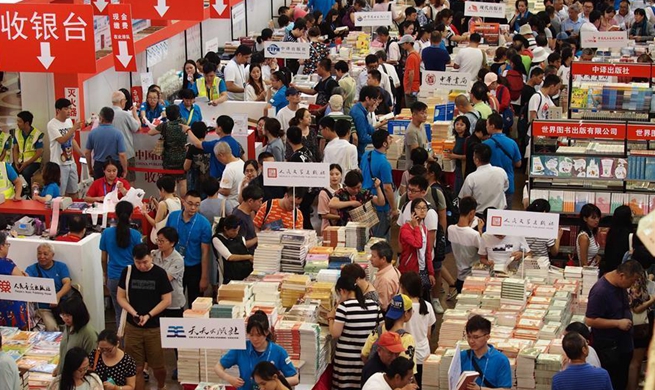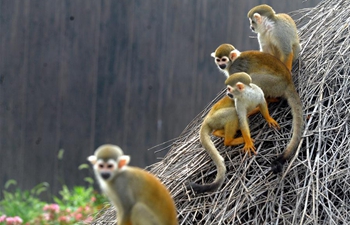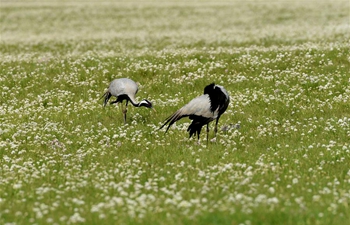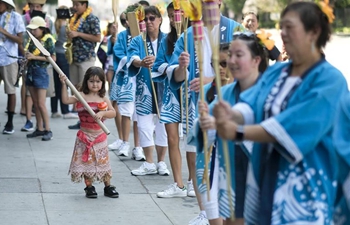by Xinhua writers Deng Xianlai, Dong Longjiang
ASTANA, Aug. 16 (Xinhua) -- The corn plants at the agriculture innovation park in Turgen, a village in Kazakhstan, are as tall as an adult human being. It's a sight of pride and joy for Abumuslim Alisultanovich.
The agronomist at the 200-hectare China-Kazakhstan Modern Agriculture Innovation Park thanks Chinese agricultural assistance for the bountiful crop.
"This is the help from one neighbor to another," he said. "I've been tracking this cornfield for over a year. The corn from China shows great resistance to both diseases and drought."
Established in May 2015, the agriculture park in the Almaty region is a joint venture between Chinese company Yangling Modern Agriculture Demonstration Park Development and Construction Co. Ltd. and a Kazakh international fund.
A pilot project in Kazakhstan under the Belt and Road Initiative, the park cultivates optimized seed strains, develops water-saving irrigation, plants fruit trees and experiments as well as promotes new agricultural machinery.
"Chinese agriculture experts have brought new technologies and new varieties of crops to us. Their expertise is admirable," Alisultanovich, who has nearly 30 years of experience in agriculture, said.
In the past three years, the park experimented with 45 varieties of crops, including wheat, maize, soybean, and oilseed rape. The new breeds have a greater output. For example, a Chinese-developed wheat, called WW5, produces 82.3 percent more than the domestic species, while P2 soybean, also cultivated by Chinese experts, produces 32.7 percent more than the Kazakh variety.
"What makes China different from other countries is that not only have Chinese experts brought output growth to Kazakhstan, they also come here to demonstrate the technologies," Alisultanovich said.
Kazakh President Nursultan Nazarbayev highlighted the benefits of the agricultural cooperation with China to Xinhua in May.
He said the trade volume of agricultural products between the two countries has surged 20 percent in the past five years, and the export of Kazakh agricultural products to China has more than doubled.
Han Wanchu, deputy chief representative of the Kazakh fund in Xi'an, a city in western China, told Xinhua that while Kazakhstan has abundant agricultural resources, the small population meant limited domestic consumption of agricultural products. But that's a thing of the past.
"Now, against the backdrop of the Belt and Road Initiative, agricultural cooperation between the two countries have been advancing on a fast track. Wheat powder, edible fat and oil, and different snacks from Kazakhstan are entering the Chinese market in large amounts," Han said. "It lessens Kazakh farmers' worry about where to sell their products.
It is also much easier now for Kazakhs to buy fruits and vegetables imported from China. The Green Bazaar in Almaty City, for instance, is a well-known marketplace not only in Kazakhstan, but also across Central Asia.
According to Sholpan Kupriyanova, a vendor at the bazaar, vegetables from China, such as spinach, broccoli and cherry tomato, will arrive at the market in winter. Chinese vegetables are cheaper than those from neighboring Uzbekistan, she said.


